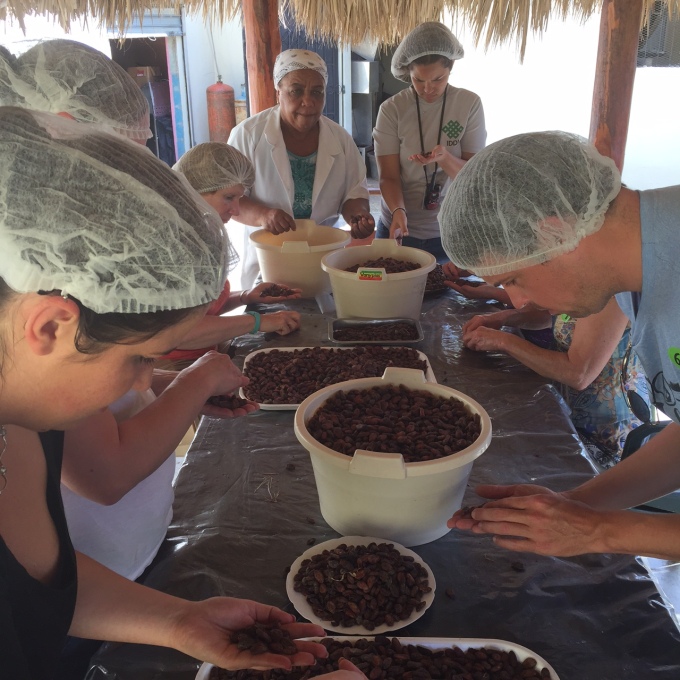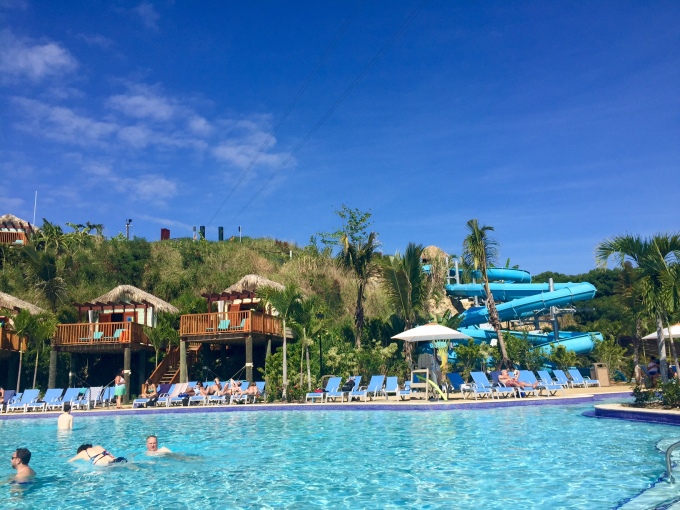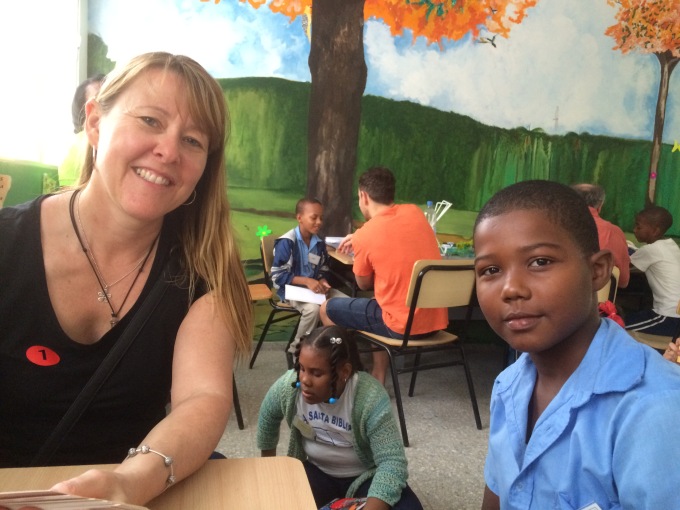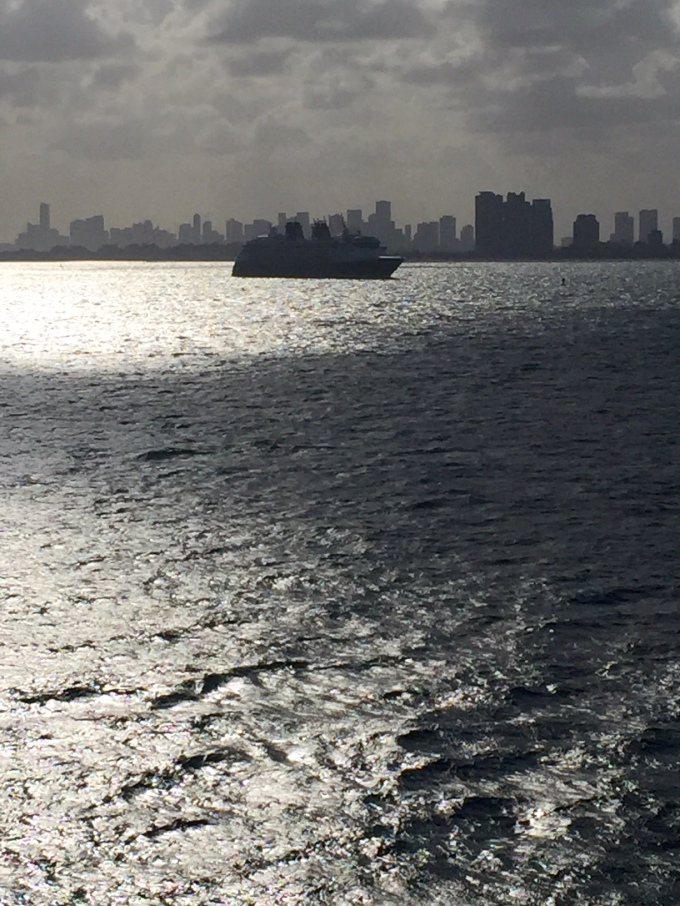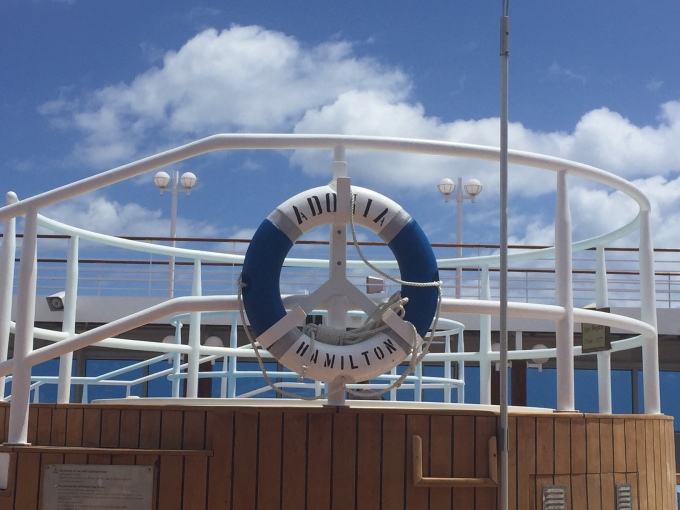- Sorting Cocoa beans
Before embarking on the cruise, you are able to go online and choose up to 3 impact activities that you would like to take part in. In brief, these are the options, Reforestation and Nursery, Recycled Paper, Cacao and Women’s Chocolate Cooperative, Community English, Student English, Water Filtration, Concrete Floors and Creative Arts, Music and Sports.
Once on board you are assigned tickets for your chosen activities stating the day and time. The morning activities starting at 7.30, and the afternoon ones at 2pm. This is definitely not for people who just want to spend the day by the pool relaxing, this is about getting involved and making an impact. For the English language activities there is a prerequisite course to attend on board during the day at sea. This prepares you for the teaching activity and introduces the special books for the course which have been designed.
The port of Amber Cove on the Northern shores of the Dominican Republic near Puerto Plata, it is a purpose built resort area built for Carnival Corp at a cost of over $80 million. It services ships from the Carnival line, including Holland America, Cunard, P&O among others. There is a large pool, with slides and zip line over the top. A restaurant, bar and numerous shops. The port is equipped with 2 berths and can accommodate up to 10,000 passengers. This is also the location that the buses leave for the impact activities in the local communities.
Up bright and early, ready for the 7.30 departure, we made our way to the buses. My first impact activity was the Cacoa and Womens Chocolate Cooperative. After a 30 minute drive deeper into the country we arrived at the Cooperative. Chocal was created by local women in this community where about 20 of them work. They use the cocoa beans grown locally to make organic chocolate which is sold in grocery stores throughout the region and at Amber Cove. The morning was divided into 4 activities which the groups rotated through. Sorting the dried cocoa beans, sorting the ground cocoa nips and removing any shells, pouring the chocolate into moulds, and finally wrapping and packaging. It was a great activity working alongside the local women, increasing their production for the day. During our time there we wrapped 1600 chocolate bars and sorted 38 lbs of coffee nips.
The next morning we set off bright on early to a school in the heart of Puerto Plata. One of the skills in demand by local employers is basic English. However, there is a shortage of trained English teachers so Entrena has partnered with Fathom to improve English language education. We were introduced to the Principal and then met the children. Our impact guide helped everyone, children and volunteers to relax with a warm up singing game. At our session we helped a class of 10 year olds working with a one to one ratio, following the lesson plan in the books provided, to start to learn English. It was actually a lot harder than I had imagined not being a teacher, but very rewarding as George started to recognise the words and repeat them back. This was repeated after recess with a second group children. The progress of the children will be tracked during the year so that we are able to check back at a later date to see how they are doing.
My final activity was Reforestation and Nursery. The purpose is to restore degraded land and contribute to forest and wildlife conservation throughout the region, working to protect and extend its natural resources. Another 25 minute bus ride into the hills near Puerto Plata, enroute our impact guide gave an overview of what we would be doing and how it was helping. We prepared pots for seed planting, planted seeds and replanted palms moving them to the nursery so that they would have a better chance of growing. Another very rewarding activity and quite tiring.
All three activities that I was lucky enough to be involved in were very different, but rewarding in their own way. It was a good feeling to think that we have helped these people even just a little, and I hope that the work continues and improves the region’s economy and the people’s lives.
Talking with other travellers back on the ship it was interesting to hear the different activities and how they had impacted people. Pouring concrete floors in people’s homes who had been
living with dirt floors for years, was very hard work, but sounded like a very rewarding impact activity that I would love
to try. Working in local communities, going into people’s homes to help teach English, created lots of heart-warming stories.
I really enjoyed the week away, the courses and options on the ship were varied and interesting, and the impact activities also. I would recommend this new type of travel, the small ship environment has an intimate feel where you connect with like-minded travellers from around the world who want to do something a little different with their vacation time.
- Amber Cove
- Teaching English
